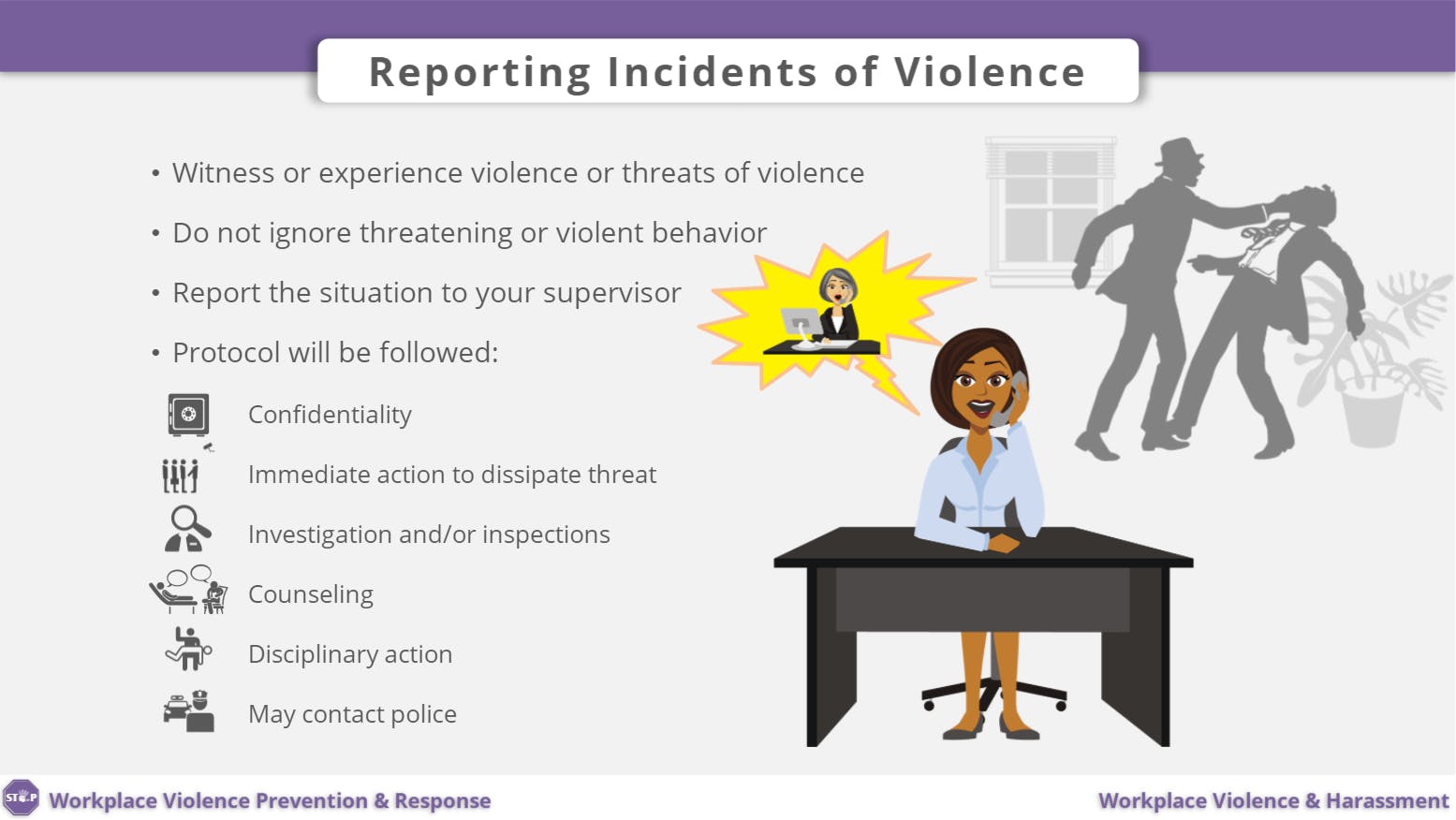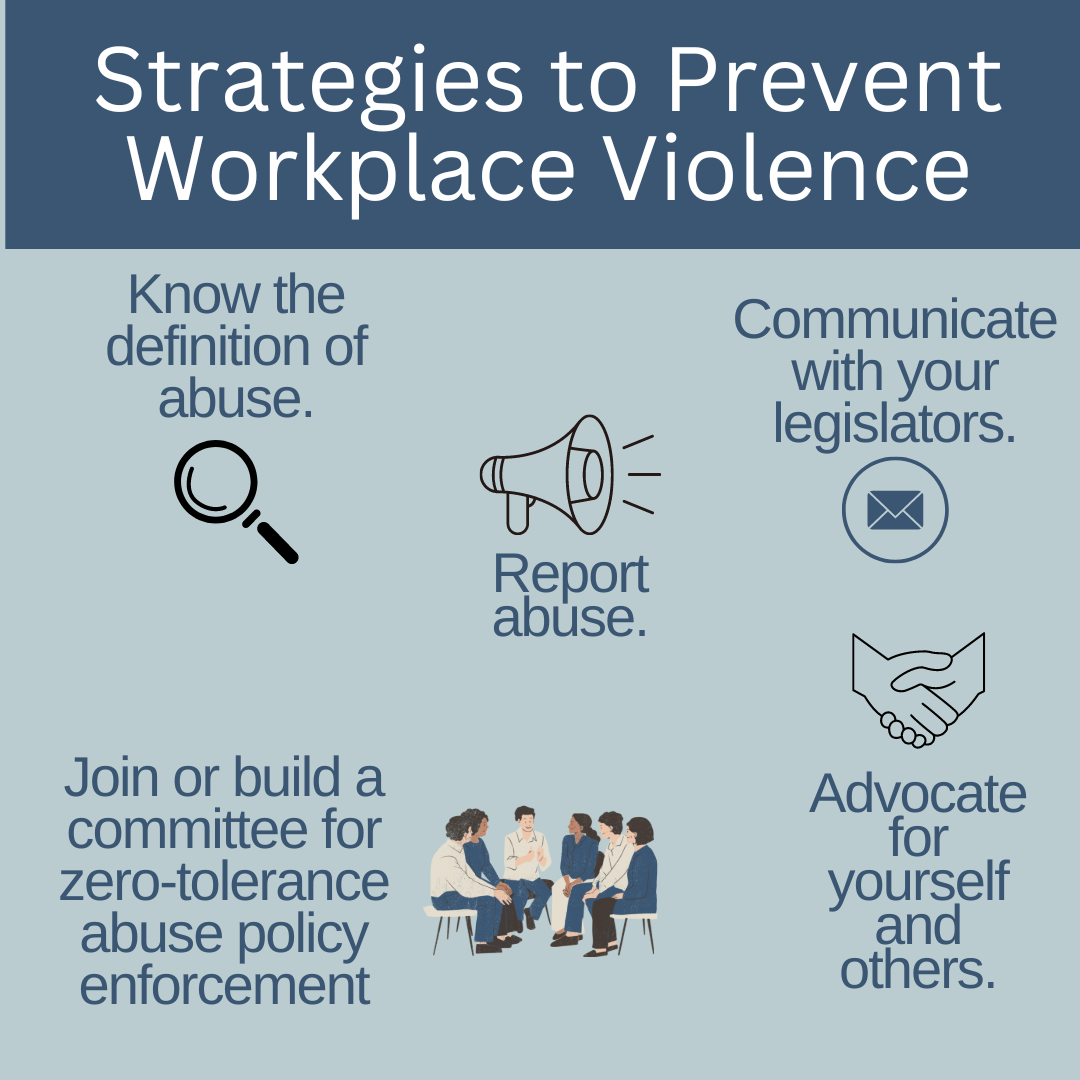The Role of Staff Member Training and Awareness in Enhancing Workplace Physical Violence Avoidance Initiatives Throughout Various Industries
The assimilation of employee training and awareness into workplace physical violence avoidance initiatives is increasingly acknowledged as a fundamental aspect of organizational safety and security throughout diverse sectors. Understanding these nuances might expose strategies that can dramatically enhance security protocols and employee self-confidence in risky settings.
Relevance of Educating Programs
In today's vibrant workplace, the value of training programs can not be overstated, particularly in the context of workplace physical violence avoidance. These programs work as a foundational element in growing a protected and risk-free office culture. By equipping staff members with the knowledge and abilities essential to identify, mitigate, and respond to prospective risks, organizations can cultivate a setting that focuses on safety and security and health.
Reliable training programs do greater than simply instruct; they equip staff members to acknowledge indication of violence, recognize the procedures for reporting cases, and develop methods to de-escalate prospective disputes. They infuse a feeling of collective obligation amongst staff, encouraging proactive engagement in keeping a safe work environment.
Investment in training not just enhances staff member recognition yet also demonstrates a company's dedication to guarding its labor force. This aggressive strategy can bring about decreased incidents of work environment violence, reduced absenteeism, and improved worker spirits. Inevitably, extensive training programs are essential to developing a durable business society that values security and advertises a healthy and balanced job setting, consequently minimizing the danger of physical violence and its associated consequences.
Secret Parts of Effective Awareness
A detailed awareness program encompasses numerous vital parts that are vital for efficiently stopping work environment violence. Clear communication of plans and procedures connected to office violence is critical. Workers have to be educated regarding the organization's position on violence and the specific methods in area for reporting incidents.
2nd, training sessions should include reasonable situations that employees may experience. This functional technique aids employees identify warning indications of potential physical violence and furnishes them with the needed abilities to de-escalate tense scenarios. Third, fostering an encouraging work environment culture is essential; employees need to feel equipped to speak out without worry of revenge.
Furthermore, recurring education and learning is crucial to keep awareness pertinent and fresh. Regular correspondence course and updates on arising threats can boost employees' caution and preparedness. Last but not least, integrating comments mechanisms enables employees to share their experiences and understandings, which can result in constant enhancement of awareness initiatives. By integrating these elements, organizations can create a robust framework for stopping workplace physical violence, inevitably contributing to a more secure and a lot more effective atmosphere for all workers.
Industry-Specific Training Approaches
Efficient office physical violence prevention training have to be tailored to the one-of-a-kind obstacles and threats dealt with by particular markets. For instance, health care atmospheres call for training that addresses the high probability of experiences with hostile people or visitors. Programs need to focus on de-escalation strategies, recognizing indication of prospective violence, and making sure team understand the value of reporting cases.
In contrast, retail setups may deal with different dangers, such as robbery or consumer disagreements. Training in these environments need to stress situational recognition, action methods during emergency situations, and the significance of protecting cash and valuables.
Manufacturing and construction sectors offer their own threats, commonly related to social conflicts or risky working problems. Training in these sectors must consist of approaches for conflict resolution, advertising a society of security, and encouraging open interaction among workers.
Furthermore, corporate workplaces might need training centered on preventing harassment and intimidation, cultivating a respectful office culture, and applying clear coverage systems. Each sector has to not i thought about this just identify its details susceptabilities yet also adapt training materials to reverberate with the labor force properly, making sure that employees really feel complete and empowered to deal with possible violent scenarios.
Gauging Training Efficiency
Examining the effect of office violence avoidance training is critical for guaranteeing that employees are adequately prepared to take care of prospective risks. To properly measure training effectiveness, organizations should apply both qualitative and measurable evaluation methods. Pre- and post-training surveys can determine changes in worker expertise, mindsets, and habits concerning work environment violence. These studies ought to focus on particular training goals to guarantee alignment with the organization's objectives.
In addition, functional evaluations, such as role-playing situations or simulations, can provide insights right into exactly how well workers apply found out skills in real-life situations. Keeping track of event reports prior to and after training can also work as an indication of efficiency, as a reduction in occurrences might mirror enhanced staff member preparedness.
Furthermore, feedback from participants must be methodically accumulated to recognize locations for improvement in training web content and distribution. Carrying out follow-up analyses at routine periods helps receive recognition and enhances training principles over time - california workplace violence prevention. By using a detailed approach to measuring training performance, news organizations can guarantee that their workplace physical violence avoidance initiatives foster a much safer setting and enhance total worker health
Building a Culture of Safety

Training plays an essential role in this social change. Normal, extensive training sessions educate workers concerning identifying warning signs of workplace violence and the ideal responses. Additionally, urging open communication enables employees to voice problems without anxiety of vengeance, advertising cumulative obligation for security.
Furthermore, integrating safety and security right into everyday procedures guarantees that it ends up being a common value instead than a simple conformity concern. This includes regular security drills, updates on policies, and comments devices that involve employees in security conversations and improvements.
Eventually, a robust society of safety and security not only alleviates the dangers of work environment physical violence yet likewise boosts worker spirits and performance. By promoting an environment where safety is an essential priority, organizations can develop resilient offices that sustain both specific wellness and collective success.
Verdict
In conclusion, employee training and recognition are crucial elements in the prevention of work environment violence across various industries. Reliable training programs, customized to specific industry demands, boost workers' ability to acknowledge and respond to prospective dangers. By executing detailed awareness strategies and fostering a culture of safety and security, organizations can dramatically reduce cases of office violence and improve total staff member morale. Commitment to ongoing training and examination makes certain continual performance and versatility in attending to emerging difficulties within the workplace environment.

Regular, detailed training sessions enlighten workers concerning recognizing warning indications of work environment physical violence and the appropriate actions.In verdict, employee training and awareness are crucial parts in the prevention of office physical violence throughout various industries.